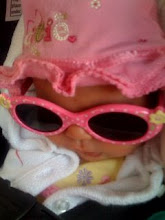After a business trip in Miami, I spent Thursday night at Nana and Papa's beautiful condo in Key Largo. After a very good night's sleep, I stopped by
Harry Harris Park on the way back to the airport. For no particular reason other than where boats and fishermen were not, and the direction of the wind (from the SE) I decided to snorkel on the
leeward side of the north boat ramp breakwater. Snorkeling is one of my favorite activities (I've done it in the Everglades, mangrove swamps, the Gulf Stream- pretty much anywhere there is something to see...) so I figured there would be no such thing as a bad place to go in- especially in Tavernier!
View Larger MapI brought along a plastic bag and a $1 (i.e. disposable prior to boarding!) utility knife just in case I saw anything to bring home for the aquarium. The water in the area I dove was about 6-7' deep at most. The bottom was a combination of turtle grass beds, and "hard bottom" areas largely covered with macroalgae and scattered sponges and gorgonians but not much rubble. There was a good sprinkling of small stony corals such as rose, cup and star coral and branching
Porites (I assume.) I had no idea what to expect, but did a lot of looking around and ended up finding a few interesting things.
There were a number of sponges, mostly large ones and "chicken liver" and black ball sponges. There were some pretty orange ball sponges, but they were all a little large except for this small and somewhat worse for wear specimen; I didn't feel like fragging one of the larger ones since I'm not sure how it would do. The branching sponge in this pic is a chicken liver sponge; this was cut off from a larger specimen.

There were a lot of purple sea blades,
Pterogorgia sp., mostly kind of large. I found this smaller one a little further out, that is in very good condition as well. This is an entire specimen broken off from the base.

This is another gorgonian that is really cool, and looks even better under the tank lighting. I think/hope that it is a corky sea finger (
Briareum asbestinum) since they are highly photosynthetic and easy to keep. Unlike others that I've seen in the past that are brown/yellow, this one is light purple with bright white polyps. It was cut from a larger colony, and an additional frag broke off in the bag.

This is an encrusting
Briareum (caribaeorum?) gorgonian. The polyps are larger and cream colored, and it looks very cool- at first glance kind of like Pacific star polyps. There were quite a few of these colonies scattered around at the base of sponges and so forth; I used the knife to pry this section off the rock.

There were just a couple of what I think are purple sea plumes,
Pseudopterogorgia bipinnata. I cut this off of a larger colony, and ended up with another bonus frag when a lower branch fell off. :) As you can see, this (left) has a distinct look from our existing purple gorgonian-
Muriceopsis flavida (probably) (right). The branches and polyps of the
P. bipinnata are smaller and more delicate looking, and the polyps are lined up on the stalks as opposed to being randomly arranged.

This little guy came home with me unintentionally. I was already out of the water when I found it in my pocket! I have no idea how it got there, but he did help me get through airport security a little easier. To make a long story short, TSA allows you to bring aquatic animals on board with you, but they need to be able to see that they are alive. I had to convince a couple of the agents that this actually was the case, but once they called a supervisor and spoke to him he was happy to help. After showing him all of the containers, I was able to get through to the gate at long last. He is still in the container, since we aren't sure what kind of crab he is... Any ideas?













































